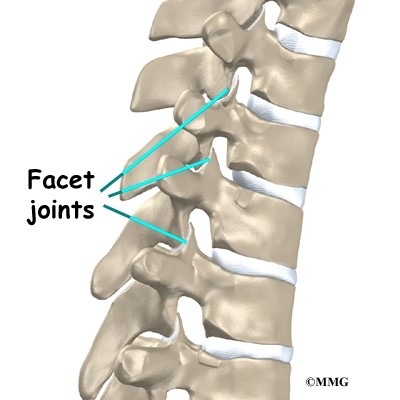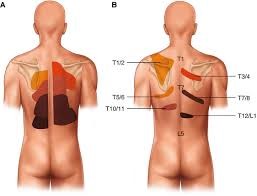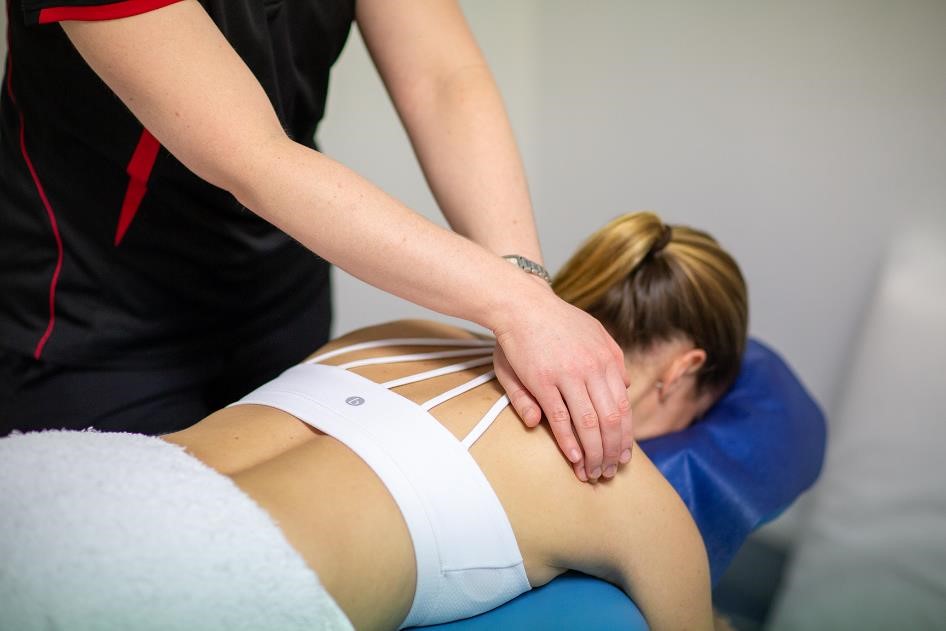Thoracic Facet Joint Pain - Fact Sheet
What is a Thoracic Facet Joint Pain ?
Thoracic facet joints are joints in the thoracic spine (upper to mid back). They are bony structures that are on each side of the prominences of the spine, and allow for certain movements namely bending forwards and backwards of the upper/mid back.
What causes Facet Joint Pain?
The facet joints can be damaged or irritated by a sudden excessive movement or by activities that repetitively load them. For example, sitting in a slumped position at work for long periods, or repeated side-to-side or reaching movements (such as using a mouse).

Signs and Symptoms of Thoracic Facet Joint Pain ?
• Unilateral back pain or ache, particularly during work or at the end of a working day.
• Pain with activities involving reaching in front of you (i.e. using a computer mouse, cooking, cleaning).
• Pain from the thoracic spine can often refer to the shoulders and shoulder blades (pictured)
.

Treatment of Thoracic Facet Joint Pain ?
Hands on treatment: involves mobilisations of the facet joints to reduce irritation and promote smooth movement of the joints. This should not be solely relied upon, as evidence suggests this works mainly in the short term, giving 2-3days relief.
Stretching and mobility exercises: Exercises that promote thoracic extension (arching backwards) and rotation often help improve the movement of the facet joints.
Strengthening exercises: particularly of the muscles between the shoulder blades and shoulders, helps support the facet joints and improve postural control.
Moving around: Sitting at a desk, driving for long periods and other prolonged postures can put stress on the facet joints. Every 20-30 or so minutes, try to get up and move around. Get a drink, do some stretches, then sit back down. These joints are designed to move!




